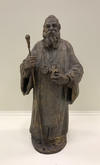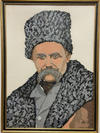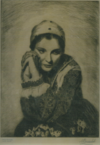This fascinating photograph captures a significant part of what the UHEC is about: it tells the stories of Ukrainian immigration to the United States, the lives of those immigrants here, the Ukrainian American communities and organizations (both religious and secular) that they formed, and their interactions with the wider American society.
Stories from Storage
Not even the biggest museums can put all of their collections on display at once. The UHEC's currently very limited gallery space makes this challenge even more extreme. The situation is even worse for archives, which can easily have millions of individual documents in their repository.
In "Stories from Storage", we show how individual museum items or archival documents held by the UHEC can illuminate the history, culture, art, and religious beliefs of Ukrainians in Ukraine and the diaspora. New content is being added on a continuing basis, so please check back.
Displaying 11 - 20 of 50












